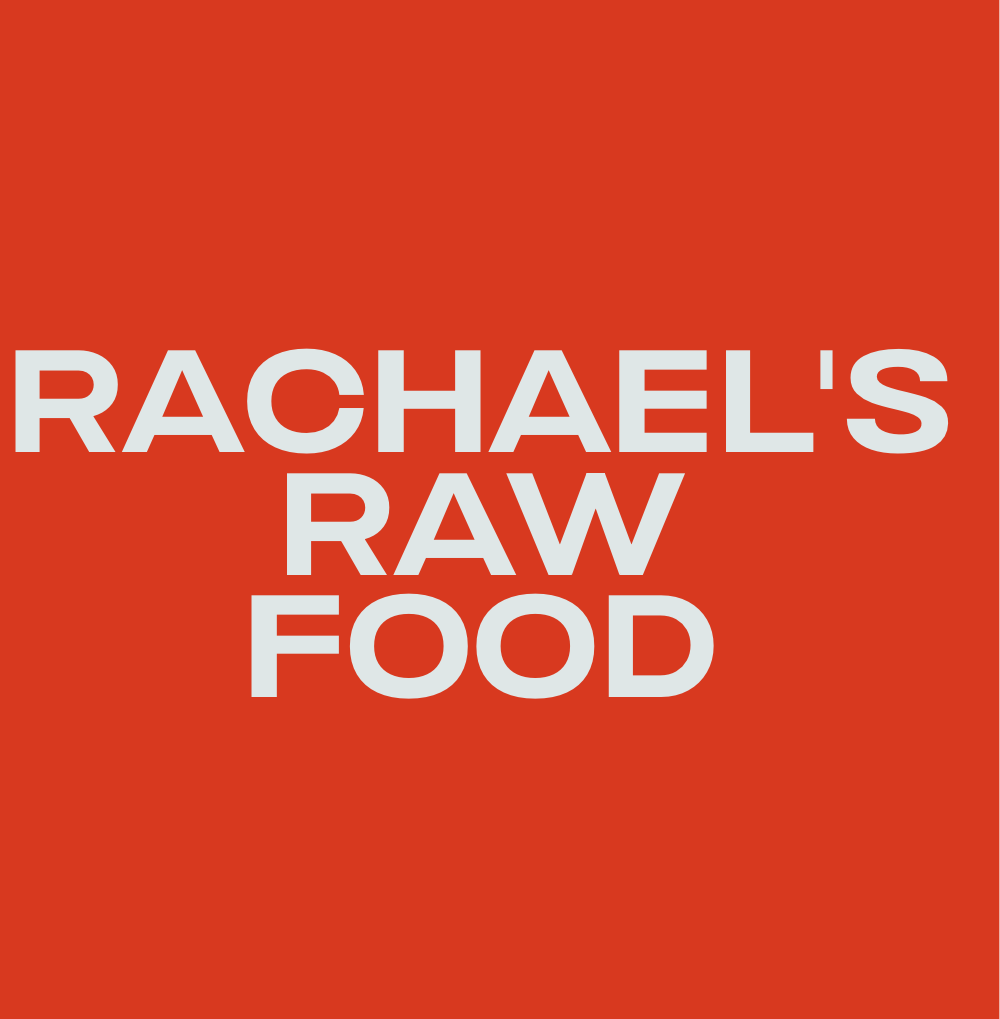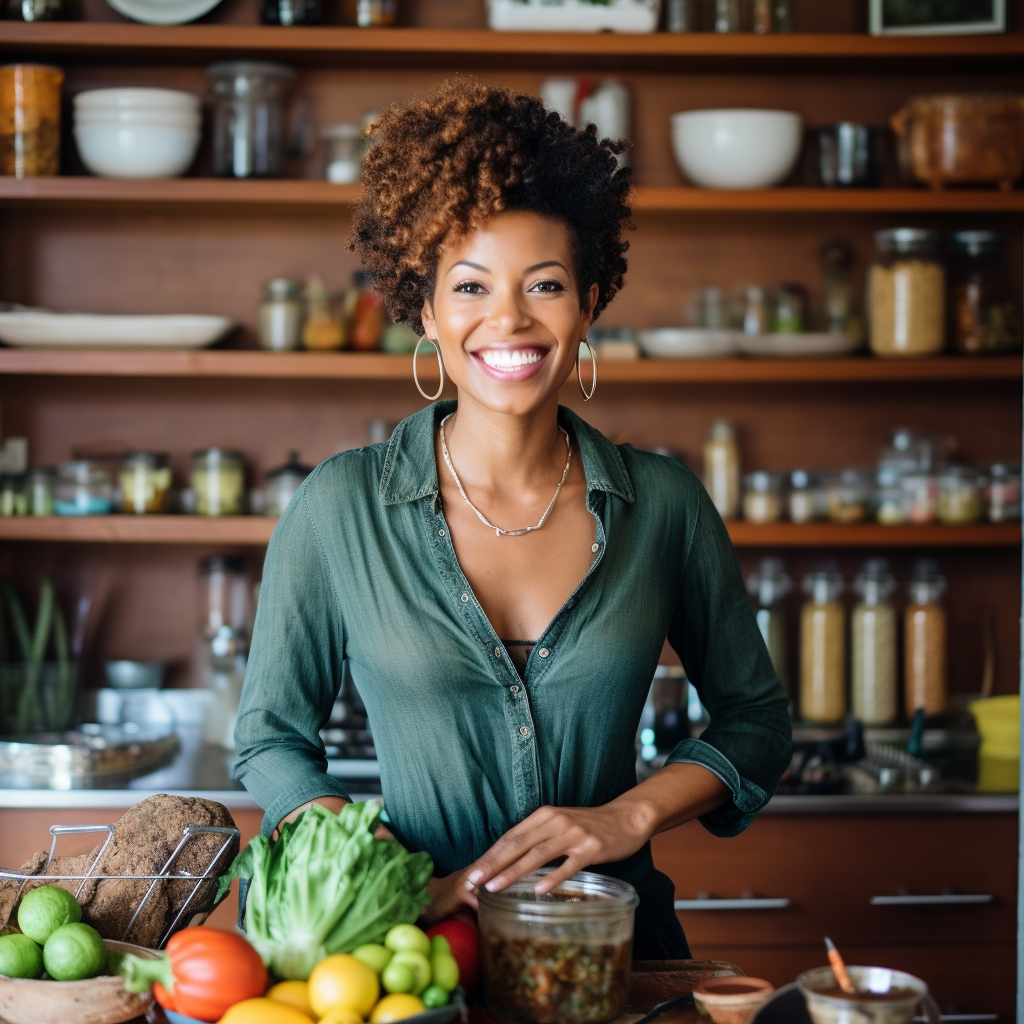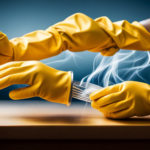What is Raw Food?
How To Properly Clean Raw Chicken To Cook Food Inspections
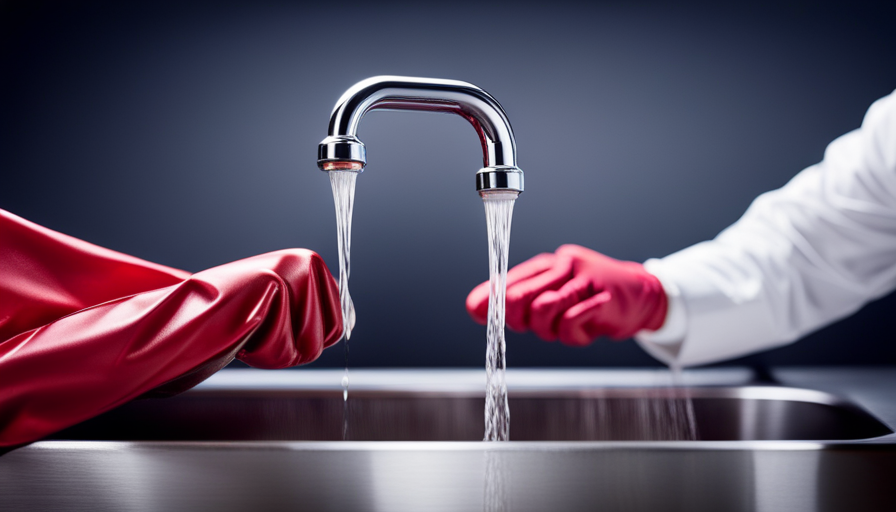
You’re ready to tackle the challenge of preparing a delicious chicken dish. Before getting started, it’s important to understand the risks of handling raw chicken and the importance of thorough cleaning. With food safety regulations becoming more stringent, ensuring your kitchen meets all requirements is crucial.
Cleaning raw chicken may not be the most glamorous task, but it is essential for maintaining food safety. In this article, we will guide you through the proper techniques for cleaning raw chicken to meet food inspection standards. From preparing your kitchen and choosing the right chicken, to washing, cutting, and marinating, we will cover every step to ensure you have a safe and hygienic cooking experience.
So let’s dive in and learn how to properly clean raw chicken for those food inspections!
Key Takeaways
- Properly cleaning raw chicken is important to prevent bacterial contamination and ensure food safety during cooking.
- Food inspections are becoming more stringent, highlighting the need for proper cleaning and handling of raw chicken.
- Steps to properly clean raw chicken include cleaning and sanitizing surfaces, using separate cutting boards and utensils, and washing utensils thoroughly with hot soapy water.
- Cooking chicken to the correct temperature of 165°F (74°C) using a meat thermometer is crucial to kill any bacteria and ensure it is safe to eat.
Understanding the Risks of Improperly Handling Raw Chicken
If you don’t handle raw chicken properly, you’re playing a dangerous game with your health. The risks of bacterial contamination are high when it comes to raw chicken.
Salmonella and Campylobacter are two common bacteria found in raw chicken that can cause foodborne illnesses. These illnesses can range from mild stomach upset to severe dehydration and even death in vulnerable populations such as young children, elderly individuals, and those with weakened immune systems.
Properly handling raw chicken is crucial to prevent the spread of these harmful bacteria. One of the best ways to ensure safe handling practices is through food safety training. Understanding the importance of food safety training can help you minimize the risks associated with raw chicken.
Food safety training provides you with the knowledge and skills necessary to handle raw chicken safely. It teaches you about proper handwashing techniques, the importance of separating raw chicken from other foods, and the correct cooking temperatures to kill any bacteria present. By following these guidelines, you can significantly reduce the chances of bacterial contamination and protect yourself and your loved ones from foodborne illnesses.
The risks of improperly handling raw chicken should not be taken lightly. Investing in food safety training is essential to ensure that you are equipped with the necessary knowledge to handle raw chicken safely and protect your health.
Preparing Your Kitchen for Safe Chicken Handling
Before you start cooking, make sure your kitchen is ready for safe handling of chicken. Proper kitchen organization and preventing bacterial contamination are crucial to ensuring the safety of your food. Here are three important steps to prepare your kitchen for safe chicken handling:
-
Clean and sanitize all surfaces: Start by thoroughly cleaning your countertops, cutting boards, and utensils with hot soapy water. Rinse them well and then sanitize with a solution of one tablespoon of bleach mixed with one gallon of water. This will kill any lingering bacteria and prevent cross-contamination.
-
Separate raw chicken from other foods: Keep raw chicken separate from other foods in the refrigerator to prevent the spread of bacteria. Store it on the bottom shelf or in a separate container to avoid any drips or leaks that could contaminate other items.
-
Use dedicated tools: Have separate cutting boards, knives, and utensils specifically for handling raw chicken. This prevents the transfer of bacteria to other foods. Consider using color-coded tools to easily distinguish between those used for chicken and other ingredients.
By following these steps, you can create a safe and organized kitchen environment that minimizes the risk of bacterial contamination when handling raw chicken.
Choosing and Storing Fresh Chicken
To ensure you have the best quality chicken, it’s important to know that the average American consumes about 92 pounds of chicken per year.
When it comes to choosing and storing fresh chicken, there are a few key factors to consider. First, look for chicken that’s firm to the touch and has a pinkish color. Avoid chicken that’s slimy or sticky, as this could indicate spoilage. It’s also important to check the expiration date on the package and make sure the chicken is within its recommended use-by date.
When it comes to storing fresh chicken, it’s crucial to follow proper food safety guidelines. Keep the chicken in its original packaging and place it in the coldest part of your refrigerator, which is typically the bottom shelf. Make sure the chicken is stored away from other foods to prevent cross-contamination. If you won’t be using the chicken within a couple of days, it’s best to freeze it. Wrap it tightly in plastic wrap or place it in a freezer bag to maintain its freshness.
By choosing and storing fresh chicken properly, you can ensure that you’re preparing a safe and delicious meal for you and your family. Remember to always follow food safety guidelines and trust your instincts when it comes to freshness.
Properly Washing Raw Chicken
Take a moment to consider the importance of thoroughly washing your chicken to protect yourself and your loved ones from potential health risks. Properly washing raw chicken is crucial to ensure food safety. By following the right washing techniques, you can minimize the risk of bacterial contamination and prevent foodborne illnesses.
To begin, always start by washing your hands with warm water and soap. This step is essential to remove any potential bacteria or dirt from your hands before handling the chicken.
Next, place the chicken in a clean sink and rinse it under cold running water. Make sure to wash all parts of the chicken, including the cavity, using your hands or a clean brush.
It is important to note that washing chicken with soap or any other cleaning agent is unnecessary and can actually increase the risk of cross-contamination. Simply rinsing it with cold water is sufficient. After washing, pat the chicken dry with paper towels to remove excess moisture.
Remember, washing chicken is just one part of ensuring food safety. It is also crucial to properly cook the chicken to kill any harmful bacteria that may be present.
By following these washing techniques and cooking the chicken thoroughly, you can enjoy a delicious and safe meal.
Using Separate Cutting Boards and Utensils
When using separate cutting boards and utensils, you can easily prevent cross-contamination and ensure the safety of your meals. It’s crucial to have designated cutting boards for raw chicken and other meats to avoid the spread of harmful bacteria. Using one cutting board for everything can cause the raw chicken juices to contaminate other foods, leading to foodborne illnesses.
To maintain proper utensil hygiene, it’s important to use separate knives, tongs, and other utensils when handling raw chicken. This prevents any potential transfer of bacteria from the raw chicken to other surfaces or cooked foods. Make sure to wash these utensils thoroughly with hot soapy water after each use to eliminate any lingering bacteria.
When choosing cutting boards and utensils, opt for materials such as plastic or glass. These materials are non-porous and easier to sanitize effectively. Avoid using wooden cutting boards as they can harbor bacteria in their grooves and crevices.
Remember to always store your cutting boards and utensils separately. Designate specific areas in your kitchen for raw chicken preparation to minimize the risk of cross-contamination. By following these simple steps and practicing good hygiene, you can ensure that your meals are safe and free from harmful bacteria.
Cooking Chicken to the Correct Temperature
Ensure that you don’t risk getting sick by cooking your chicken to the correct temperature every time, so you can enjoy a juicy and safe meal. Here are some cooking techniques and flavoring options to help you achieve that:
-
Temperature is crucial: Use a meat thermometer to check the internal temperature of the chicken. The safe minimum temperature for chicken is 165°F (74°C). This ensures that any harmful bacteria present in the meat are killed.
-
Avoid undercooking: Cooking chicken to the correct temperature not only ensures safety but also prevents the risk of foodborne illnesses like salmonella. Undercooked chicken can still harbor harmful bacteria, leading to potential health issues.
-
Overcooking isn’t ideal: While it’s important to cook chicken thoroughly, overcooking can result in dry and tough meat. To maintain juiciness, remove the chicken from heat as soon as it reaches the correct temperature.
-
Flavoring options: Cooking chicken to the correct temperature doesn’t mean sacrificing flavor. Try marinating the chicken in your favorite seasonings or using different cooking methods like grilling, roasting, or stir-frying to enhance the taste.
By following these cooking techniques and flavoring options, you can ensure that your chicken is not only safe to eat but also deliciously flavored. So go ahead, cook your chicken to the correct temperature and enjoy a flavorful and succulent meal.
Avoiding Cross-Contamination in the Kitchen
Now that you know how to cook chicken to the correct temperature, let’s focus on another important aspect of food safety: avoiding cross-contamination in the kitchen. Cross-contamination occurs when bacteria from one food item is transferred to another, leading to the potential growth of harmful bacteria and the risk of foodborne illnesses. To prevent this, it is essential to follow proper hygiene practices and implement effective food handling techniques.
One key strategy to prevent cross-contamination is to separate raw chicken from other foods, especially those that won’t be cooked, such as salads or fruits. Use separate cutting boards, utensils, and plates for raw chicken and other ingredients to avoid any contact between them. Additionally, always wash your hands thoroughly with soap and warm water before and after handling raw chicken.
To give you a better visual representation, here is a table outlining the importance of preventing bacterial growth and understanding foodborne illnesses:
| Preventing Bacterial Growth | Understanding Foodborne Illnesses |
|---|---|
| Proper refrigeration | Common foodborne pathogens |
| Safe thawing methods | Symptoms of foodborne illnesses |
| Effective cleaning | Long-term health complications |
| Adequate cooking temperatures | High-risk populations |
By following these guidelines and being mindful of cross-contamination risks, you can ensure the safety of your kitchen and the food you prepare.
Safely Marinating Raw Chicken
To safely marinate raw chicken, it’s important to keep in mind that approximately 80% of foodborne illnesses are caused by improperly handling and preparing poultry. Follow these marinating techniques to ensure a flavorful and safe cooking experience.
First, choose your marinade wisely. A good marinade not only adds flavor but also tenderizes the chicken. You can create your own marinade using a combination of ingredients like lemon juice, olive oil, garlic, and herbs. Alternatively, you can use pre-made marinades available in stores, just make sure they’re labeled for poultry use.
Before marinating, ensure the chicken is properly cleaned and trimmed. Remove any excess fat or skin and rinse the chicken under cold running water. Pat it dry with paper towels to remove excess moisture.
Next, place the chicken in a resealable plastic bag or a shallow dish. Pour the marinade over the chicken, making sure it’s completely submerged. Seal the bag or cover the dish and refrigerate for at least 30 minutes or up to 24 hours, depending on the recipe.
When marinating, it’s important to refrigerate the chicken to prevent bacterial growth. Never leave the chicken at room temperature for an extended period.
Remember to discard any leftover marinade that’s come into contact with raw chicken. It’s not safe to reuse it for basting or as a sauce. Instead, reserve a portion of the marinade before adding the chicken for later use.
By following these marinating techniques and using flavorful combinations, you can ensure a delicious and safe meal with properly marinated raw chicken.
Disposing of Raw Chicken Scraps and Packaging
Dispose of the scraps and packaging from your raw chicken in a responsible and hygienic manner to maintain a clean and safe cooking environment. Proper disposal of raw chicken scraps and packaging is essential to prevent the spread of bacteria and maintain good food safety practices. Here are some disposal options and recycling guidelines to help you handle these items correctly:
-
Sealable bags: Place any leftover chicken scraps or trimmings in a sealable plastic bag before throwing them away. This will help contain any potential bacteria and prevent cross-contamination.
-
Trash bins: Dispose of the sealed bags with the chicken scraps in a designated trash bin. Make sure the bin has a secure lid to prevent animals from accessing the waste.
-
Recycling: Check your local recycling guidelines to see if the packaging material, such as plastic wrap or trays, can be recycled. If it’s recyclable, rinse off any food residue before placing it in the recycling bin.
-
Composting: If you have a compost bin or pile, you can dispose of chicken bones and other organic scraps there. However, avoid adding any fatty or oily parts, as they may attract pests.
By following these disposal options and recycling guidelines, you can ensure that your cooking environment remains clean and safe while also practicing responsible waste management.
Establishing Good Hygiene Practices in Your Kitchen
Maintaining a hygienic kitchen involves implementing good practices like regularly washing your hands and surfaces, and ensuring that all of your utensils are properly sanitized. These practices are crucial in preventing the spread of foodborne illnesses and ensuring the safety of your meals.
One of the most important practices to follow is proper handwashing. Before and after handling raw chicken, it’s vital to wash your hands thoroughly with soap and warm water for at least 20 seconds. This helps to remove any potential bacteria that could cause foodborne illnesses. It’s also important to wash your hands after touching any surfaces or utensils that have come into contact with raw chicken, as this can further prevent cross-contamination.
In addition to handwashing, it’s essential to keep all kitchen surfaces clean and sanitized. Use a solution of warm water and dish soap to clean countertops, cutting boards, and utensils after they’ve been in contact with raw chicken. You can also use a mixture of bleach and water to sanitize these surfaces, ensuring that any harmful bacteria are eliminated.
By implementing these good hygiene practices in your kitchen, you can significantly reduce the risk of foodborne illnesses. Remember to wash your hands regularly and keep all surfaces clean and sanitized to ensure the safety of your meals.
Frequently Asked Questions
Can I use the same cutting board and utensils for raw chicken and vegetables?
Yes, it’s crucial to use separate cutting boards for raw chicken and vegetables. This helps prevent cross-contamination and the spread of harmful bacteria. Using the same cutting board and utensils for both can lead to the transfer of bacteria from the raw chicken to the vegetables, increasing the risk of foodborne illnesses. Additionally, it’s important to follow proper hand washing techniques before and after handling raw chicken to maintain food safety standards.
How long can I safely marinate raw chicken before cooking it?
To ensure safety precautions when marinating raw chicken, it’s important to consider the marinating time. For optimal flavor and tenderness, marinate the chicken in the refrigerator for no more than 24 hours. Any longer than that can increase the risk of bacterial growth and foodborne illness.
Remember to always marinate in a sealed container and discard any leftover marinade that’s come into contact with raw chicken to prevent cross-contamination.
What are some common signs of cross-contamination in the kitchen?
To ensure the safety of your kitchen, it’s crucial to be aware of the signs of cross-contamination. This includes the transfer of harmful bacteria from one surface to another, such as using the same cutting board for raw meat and vegetables without proper cleaning.
Other common signs include using the same utensils for different types of food or not washing hands after handling raw meat. Proper food handling is essential to prevent the spread of bacteria and maintain a healthy kitchen environment.
Is it safe to reuse marinade that has come into contact with raw chicken?
It’s not safe to reuse marinade that has come into contact with raw chicken. This is due to cooking safety concerns. When raw chicken is marinated, it can transfer harmful bacteria to the marinade. Reusing the marinade can lead to cross-contamination and increase the risk of foodborne illnesses. To ensure cooking safety, it’s best to discard the marinade that has been in contact with raw chicken and use fresh marinade for cooking.
How can I properly dispose of raw chicken scraps and packaging to prevent contamination?
To properly dispose of raw chicken scraps and packaging and prevent contamination, follow these steps:
- First, seal the chicken scraps and packaging in a leak-proof bag or container.
- Then, place it in a sturdy garbage bag and tie it securely.
- Keep the bag in a lidded trash bin away from food preparation areas.
- Regularly empty the bin and wash it with hot, soapy water to eliminate any remaining bacteria.
This ensures proper disposal and minimizes the risk of contamination.
What Are the Proper Cleaning Techniques for Raw Chicken to Prevent Food Poisoning?
Properly preventing food poisoning from raw chicken involves thorough cleaning and careful handling. Start by washing your hands, utensils, and cutting boards with hot, soapy water. Rinse the raw chicken under cold water before patting it dry with paper towels. Avoid cross-contamination by keeping raw chicken separate from other foods.
Can Properly Cleaning Raw Chicken Help Prevent Food Poisoning?
Properly cleaning raw chicken is essential for preventing raw chicken food poisoning. Thoroughly rinsing the chicken under cool running water and patting it dry with paper towels can help remove any bacteria present. Using separate cutting boards and utensils for raw chicken can also prevent cross-contamination.
Conclusion
So there you have it, a thorough guide on how to properly clean raw chicken to ensure food safety. By following these steps and implementing good hygiene practices in your kitchen, you can greatly reduce the risk of foodborne illnesses.
Remember, 1 in 6 Americans suffer from foodborne illnesses each year, and improper handling of raw chicken can contribute to these statistics. By taking the necessary precautions, you’re not only protecting yourself and your loved ones, but also contributing to the overall health and well-being of your community.
Stay safe and happy cooking!
Lorraine, a talented writer for rachaelsrawfood.com, brings a unique blend of creativity and expertise to the platform. With her passion for writing and deep knowledge of raw food, she plays a crucial role in inspiring and educating readers about the joys and benefits of a raw food lifestyle.
Lorraine’s creativity shines through in her recipe development. She enjoys experimenting with unique flavor combinations and innovative cooking techniques, pushing the boundaries of what can be achieved with raw ingredients. Her recipes not only showcase the incredible taste and variety of raw food but also demonstrate that a raw food diet can be exciting, diverse, and satisfying.
In addition to her writing contributions, Lorraine actively seeks out new trends, research, and developments in the field of raw food. She attends workshops, conferences, and culinary events, constantly expanding her knowledge and staying up to date with the latest discoveries. This commitment to continuous learning ensures that her writing remains current, reliable, and relevant to the ever-evolving landscape of raw food.
Lorraine’s genuine enthusiasm for raw food is contagious, and she strives to connect with readers personally. She understands that embracing a raw food lifestyle can be a journey, and she uses her writing to provide guidance, support, and encouragement to individuals at all stages of their journeys. Her empathetic approach and storytelling make her a trusted and relatable voice in the raw food community.
What is Raw Food?
How To Find Raw Ingredients For Pet Food
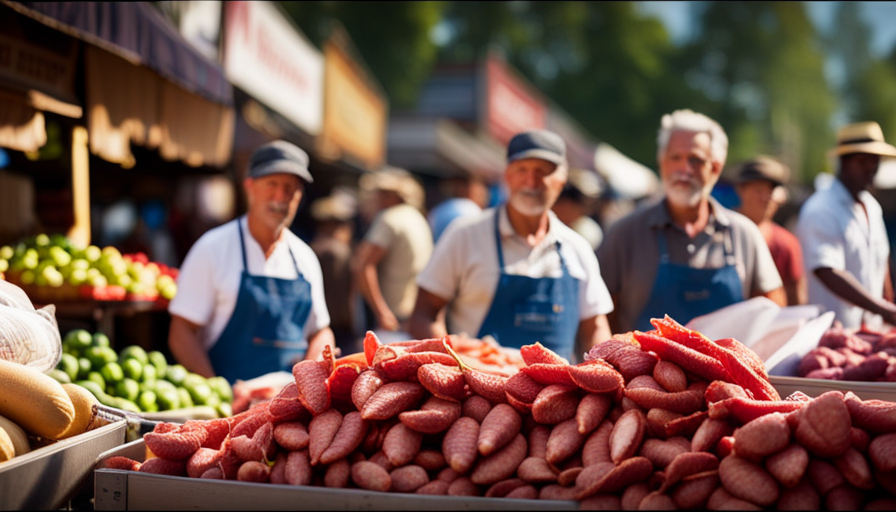
Are you tired of not knowing what’s in your pet’s food? Do you want to make homemade meals for your furry friend to ensure they are getting the best nutrition possible? You’re in luck! This article will guide you on where to find raw materials for pet food so you can make sure your beloved pet is getting the nourishment they deserve.
By making your own pet food, you have the power to choose high-quality ingredients that meet your pet’s specific nutritional needs. Whether you have a dog or a cat, it is essential to provide them with a balanced diet that includes all the necessary proteins, vitamins, and minerals.
To start, we will walk you through the process of identifying your pet’s nutritional needs and help you locate local farms, farmers markets, butchers, and meat suppliers who can provide you with fresh, raw ingredients.
Additionally, we will explore online suppliers that offer a wide variety of raw ingredients for your convenience.
Stay tuned as we delve into the world of homemade pet food and discover the many benefits it can bring to your furry friend’s health and happiness.
Key Takeaways
- Consult a veterinarian and research reputable sources to identify your pet’s nutritional needs.
- Source quality ingredients by reading labels on commercial pet food products and considering homemade options with a balance of protein, carbohydrates, and healthy fats.
- Locate local farms and farmers markets to support your pet’s health, the environment, and the local economy.
- Connect with butchers and meat suppliers to ensure the quality of ingredients in your pet’s food.
Benefits of Making Homemade Pet Food
Making homemade pet food has numerous benefits, such as improving your furry friend’s overall health and well-being. When you prepare your pet’s meals at home, you have full control over the ingredients you use. This means you can ensure that your pet receives a balanced and nutritious diet. Many commercial pet foods contain fillers, artificial additives, and low-quality ingredients that can be harmful to your pet’s health. By making homemade pet food, you can avoid these potentially harmful ingredients.
Another benefit of homemade pet food is that it can be tailored to your pet’s specific dietary needs. Some pets may have food allergies or sensitivities, and commercial pet foods may not cater to these individual needs. By preparing their meals at home, you can carefully select ingredients that are suitable for your pet’s unique needs.
Furthermore, homemade pet food can also be more flavorful and appetizing for your furry friend. You can incorporate a variety of fresh ingredients, such as lean meats, vegetables, and whole grains, which provide essential nutrients and vitamins. This can lead to improved digestion, increased energy levels, and a healthier coat.
The benefits of making homemade pet food are clear. By taking the time to prepare meals at home, you can ensure that your pet receives a nutritious and balanced diet, tailored to their specific needs. This can lead to improved overall health and well-being for your beloved furry friend.
Identifying Nutritional Needs for Your Pet
Contrary to popular belief, it’s quite surprising how often we overlook the importance of understanding our furry friends’ nutritional requirements. Just like humans, pets have specific nutritional needs that must be met in order to maintain optimal health.
To ensure that you are providing the best diet for your pet, it is crucial to identify their nutritional needs and source quality ingredients.
Identifying nutritional needs:
- Consult your veterinarian: They can provide valuable insight into your pet’s specific dietary requirements based on their age, breed, size, and any existing health conditions.
- Research reputable sources: Look for reliable information from trusted sources such as veterinary publications or pet nutritionists to gain a better understanding of the essential nutrients your pet needs.
Sourcing quality ingredients:
- Read labels: Carefully examine the ingredient list on commercial pet food products to ensure they contain high-quality, recognizable ingredients.
- Consider homemade options: Making your own pet food gives you complete control over the ingredients. Be sure to include a balance of protein, carbohydrates, and healthy fats.
Remember, providing a nutritious diet is essential for your pet’s overall well-being. By identifying their nutritional needs and sourcing quality ingredients, you can ensure that they’re getting the best possible diet to support their health and happiness.
Locating Local Farms and Farmers Markets
When it comes to ensuring the highest quality for your furry friend’s diet, you can easily locate local farms and farmers markets where you can discover a wide array of fresh, locally-sourced options.
Locating organic options and supporting local agriculture not only benefits your pet’s health, but also the environment and local economy.
By choosing to buy from local farms and farmers markets, you can have peace of mind knowing that the ingredients in your pet’s food are sourced from nearby. This means they’re likely to be fresher and more nutrient-rich compared to mass-produced options that may have traveled long distances before reaching store shelves.
When you support local agriculture, you contribute to the preservation of farmland in your community. This helps maintain a sustainable and diverse food system for both humans and animals. Additionally, buying from local farms allows you to establish a direct connection with the farmers who grow the ingredients for your pet’s food. You can ask questions about their farming practices and ensure that they align with your pet’s dietary needs and preferences.
To locate local farms and farmers markets, you can start by checking online directories or using mobile apps that specialize in connecting consumers with local producers. You can also ask for recommendations from other pet owners or visit your nearest agricultural extension office for information on nearby farms and markets.
Choosing to locate local farms and farmers markets for your pet’s food not only provides you with organic options but also supports local agriculture. It’s a win-win situation for both your furry friend’s health and the community.
Connecting with Butchers and Meat Suppliers
Supporting local butchers and meat suppliers enables you to establish a personal connection with the people who provide the nourishing proteins for your furry companion, fostering a sense of trust and community. By connecting with local suppliers, you not only ensure the quality of the ingredients in your pet’s food but also contribute to the local economy.
Here are some tips for finding ethical sources:
-
Take the time to research and identify local butchers and meat suppliers in your area. Look for those who prioritize animal welfare and sustainable farming practices.
-
Visit the butcher shop or meat supplier in person. This allows you to see firsthand how they handle and store their products. Look for cleanliness and organization, as these are indicators of a reputable supplier.
-
Ask questions about the origin of the meat and the farming practices used. Ethical suppliers will be transparent and proud to share information about their sources.
By connecting with local suppliers and finding ethical sources, you can have peace of mind knowing that the raw ingredients in your pet’s food are of the highest quality. Plus, you’ll be supporting local businesses and fostering a stronger sense of community.
Exploring Online Suppliers for Raw Ingredients
If you’re looking to up your furry friend’s nutrition game, checking out online suppliers for top-notch, high-quality ingredients is a paw-some option! When exploring online suppliers for raw ingredients, it’s essential to do your research and read online reviews to ensure you’re getting the best products for your pet.
Online reviews can provide valuable insights into the quality and reliability of the supplier, giving you peace of mind when making your purchase. Additionally, comparing prices is crucial when shopping for raw ingredients online. Different suppliers may offer varying prices for the same product, so it’s essential to compare and find the best deal.
Take the time to browse through different websites, noting the prices offered for the ingredients you’re looking for. Don’t forget to consider factors like shipping costs and discounts offered by the supplier. By comparing prices, you can find the most cost-effective option without compromising on the quality of the ingredients.
Online suppliers can be a convenient and reliable source for raw ingredients for your pet’s food. By utilizing online reviews and comparing prices, you can ensure that you’re providing your furry friend with the highest quality ingredients while staying within your budget. So go ahead, do your research, and find the perfect online supplier to take your pet’s nutrition to the next level!
Understanding Food Safety and Handling
Now that you’ve explored online suppliers for raw ingredients, it’s important to understand the significance of food safety and proper handling techniques when it comes to preparing pet food.
Just like human food, pet food must adhere to certain food safety standards to ensure the health and well-being of our furry friends.
Food safety standards for pet food involve guidelines and regulations that aim to prevent contamination and maintain the nutritional value of the ingredients. This includes proper storage, handling, and preparation of raw ingredients. It’s crucial to handle raw ingredients with care to minimize the risk of bacterial growth or cross-contamination.
When handling raw ingredients for pet food, it’s essential to wash your hands thoroughly before and after handling. Additionally, separate cutting boards and utensils should be used specifically for pet food preparation to avoid the transfer of harmful bacteria to human food. Raw ingredients should be stored at the appropriate temperature to prevent spoilage and maintain freshness.
By following these food safety standards and proper handling techniques, you can ensure that your pet’s food is safe and nutritious. Remember, the health and well-being of our furry friends depend on us, and providing them with safe and healthy food is a crucial part of responsible pet ownership.
Choosing the Right Proteins for Your Pet
When it comes to selecting the perfect proteins for your furry friend, it’s important to consider their dietary needs and preferences. Choosing alternative proteins can provide a variety of benefits for your pet, including reducing the risk of food allergies and sensitivities.
Here are some key factors to keep in mind when considering protein options for your pet:
-
Fish: Fish is an excellent source of protein for pets, especially those with allergies to common protein sources like chicken or beef. It’s also rich in omega-3 fatty acids, which can support your pet’s skin and coat health.
-
Lamb: Lamb is a great option for pets with sensitive stomachs or allergies. It’s easily digestible and provides essential amino acids that are necessary for their overall health.
-
Turkey: Turkey is a lean protein source that can help maintain your pet’s muscle mass. It’s also a good option for pets with food allergies or sensitivities.
-
Duck: Duck is a novel protein source, making it a suitable option for pets with food allergies. It’s also rich in iron and provides essential nutrients for your pet’s well-being.
-
Venison: Venison is a lean and highly digestible protein source. It’s a good option for pets with food allergies or sensitivities, as it’s not commonly found in commercial pet foods.
Understanding protein requirements is crucial in providing a balanced diet for your pet. Consult with your veterinarian to ensure you’re meeting their specific dietary needs.
Incorporating Fruits and Vegetables into Their Diet
Incorporating fruits and vegetables into your furry friend’s diet can provide them with essential vitamins and minerals they need for optimal health. When it comes to choosing the right fruits and vegetables for your pet, it’s important to consider incorporating frozen options.
Frozen fruits and vegetables are a convenient choice, as they’re often picked at the peak of freshness and then quickly frozen, preserving their nutritional value. Plus, frozen options can be a cost-effective way to provide your pet with a variety of fruits and vegetables throughout the year.
When it comes to finding organic options, it’s important to look for pet food brands that prioritize using organic ingredients. Organic fruits and vegetables are grown without the use of synthetic pesticides, fertilizers, or GMOs. By choosing organic options, you can ensure that your pet is getting the best quality produce without any potentially harmful chemicals.
To incorporate fruits and vegetables into your pet’s diet, you can start by adding small amounts to their regular meals and gradually increasing the portion size. Some popular options include blueberries, carrots, spinach, and sweet potatoes. Just be sure to avoid feeding your pet any fruits or vegetables that are toxic to them, such as grapes, onions, or avocados.
Overall, incorporating fruits and vegetables into your pet’s diet can provide them with a wide range of health benefits. By choosing frozen and organic options, you can ensure that your furry friend is getting the best nutrition possible.
Adding Essential Supplements for Balanced Nutrition
To ensure your furry friend gets a balanced diet, don’t forget to add essential supplements that’ll give them a nutritional boost beyond their wildest dreams.
While incorporating fruits and vegetables into your pet’s diet is important, it’s equally crucial to address any nutrient deficiencies that may arise. Just like humans, pets can also suffer from imbalances in their diet, which can lead to various health issues.
One essential supplement that’s often recommended for pets is omega-3 fatty acids. These fatty acids help promote healthy skin and coat, reduce inflammation, and support brain and joint health. Fish oil is a common source of omega-3 fatty acids for pets.
Another important supplement is probiotics, which can aid in digestion and support a healthy gut. Probiotics can help improve nutrient absorption and strengthen the immune system.
Additionally, certain vitamins and minerals are essential for your pet’s overall well-being. These include vitamin D, vitamin E, calcium, and iron. Ensuring that your pet receives these nutrients in adequate amounts can help prevent nutrient deficiencies and promote optimal health.
Adding essential supplements to your pet’s diet is crucial for maintaining a balanced diet and preventing nutrient deficiencies. Consult with your veterinarian to determine the specific supplements that’re appropriate for your pet’s individual needs.
Providing your furry friend with the necessary nutrients will contribute to their overall health and happiness.
Meal Prepping and Storage Tips
Make meal prepping and storing your pet’s nutritionally balanced meals a breeze with these helpful tips. When it comes to meal prepping for your pet, there are a few key tips to keep in mind.
First, make sure to plan out your pet’s meals in advance. This will not only save you time but also ensure that your pet is getting all the necessary nutrients. Consider using a meal prep calendar or app to help you stay organized.
Next, invest in high-quality storage containers that are airtight and freezer-safe. This will help keep your pet’s meals fresh and prevent any freezer burn. Additionally, label each container with the date and contents to easily keep track of what you have on hand.
When it comes to portioning out your pet’s meals, consider using silicone ice cube trays or muffin tins. These can be a convenient way to control portion sizes and make it easier to thaw individual servings.
Lastly, be sure to thaw your pet’s meals in the refrigerator rather than on the counter. This will help prevent the growth of harmful bacteria. And remember, always wash your hands and any utensils or surfaces that come into contact with your pet’s food to maintain proper hygiene. With these meal prepping tips and storage hacks, you can ensure that your pet’s meals are always fresh and nutritious.
Frequently Asked Questions
What are the potential risks and drawbacks of making homemade pet food?
When making homemade pet food, there are potential health risks and drawbacks to consider. One major concern is the potential for nutritional deficiencies. Without proper knowledge and guidance, it can be challenging to ensure that your pet’s diet is balanced and meets all their nutritional needs.
Additionally, there is a risk of contamination or improper handling of raw ingredients, which can lead to foodborne illnesses. It’s crucial to consult with a veterinarian or animal nutritionist to create a well-rounded and safe homemade pet food plan.
How can I ensure that the raw ingredients I find are of high quality and safe for my pet?
To ensure pet food safety and evaluate ingredient sources, there are a few key steps you can take. Firstly, research reputable suppliers who prioritize quality and transparency. Look for certifications like AAFCO, which ensures that the food meets specific nutritional standards.
Additionally, examine the ingredient list carefully, avoiding any artificial additives or fillers. Lastly, consider consulting with a veterinarian or pet nutritionist to ensure that the ingredients you choose will meet your pet’s specific dietary needs.
Are there any specific guidelines or recommendations for portion sizes when feeding homemade pet food?
When it comes to portion control and nutritional balance in homemade pet food, there are some guidelines you can follow. It’s important to consult with a veterinarian to determine the appropriate portion sizes for your pet based on their breed, age, weight, and activity level.
Additionally, ensure that the homemade pet food contains a proper balance of proteins, carbohydrates, and fats to meet your pet’s nutritional needs. Following these guidelines will help keep your pet healthy and satisfied.
Can I use frozen fruits and vegetables in my pet’s homemade diet?
Frozen fruits and vegetables can be a convenient and nutritious addition to your pet’s homemade diet. While some may argue that fresh is always best, frozen produce often retains more nutrients due to being picked at peak ripeness and quickly frozen. Canned fruits and vegetables, however, may have added sugars or preservatives that are not ideal for pets. To ensure the best quality, opt for frozen options and always check labels for any additives.
Are there any common mistakes or pitfalls to avoid when meal prepping and storing homemade pet food?
When it comes to meal prepping and storing homemade pet food, there are a few common mistakes and pitfalls to avoid. First, make sure to properly balance the nutrients in your pet’s diet to avoid deficiencies or excesses.
Additionally, be cautious with the storage of homemade pet food, as improper storage can lead to bacterial growth and contamination.
Lastly, always follow safe food handling practices to ensure your pet’s health and well-being.
Can I Use the Raw Ingredients I Find for Pet Food to Prepare Meals Ahead of Time?
When it comes to feeding raw food pets ahead, it’s essential to use quality ingredients. Look for fresh, unprocessed items such as raw meat, bones, and organs. Be sure to research the nutritional requirements and potential risks associated with raw pet diets before preparing meals in advance.
Conclusion
In conclusion, by taking the time to find raw ingredients for your pet’s food, you’re ensuring they receive the best nutrition possible.
By exploring local farms, farmers markets, butchers, and online suppliers, you’ve access to a wide range of fresh, high-quality ingredients.
By incorporating a variety of proteins, fruits, and vegetables, you can create a well-balanced diet for your furry friend.
Don’t forget to add essential supplements for optimal health.
With proper meal prepping and storage, you can provide your pet with delicious and nutritious meals every day.
Start today and witness the vibrant health and happiness of your beloved pet.
Lorraine, a talented writer for rachaelsrawfood.com, brings a unique blend of creativity and expertise to the platform. With her passion for writing and deep knowledge of raw food, she plays a crucial role in inspiring and educating readers about the joys and benefits of a raw food lifestyle.
Lorraine’s creativity shines through in her recipe development. She enjoys experimenting with unique flavor combinations and innovative cooking techniques, pushing the boundaries of what can be achieved with raw ingredients. Her recipes not only showcase the incredible taste and variety of raw food but also demonstrate that a raw food diet can be exciting, diverse, and satisfying.
In addition to her writing contributions, Lorraine actively seeks out new trends, research, and developments in the field of raw food. She attends workshops, conferences, and culinary events, constantly expanding her knowledge and staying up to date with the latest discoveries. This commitment to continuous learning ensures that her writing remains current, reliable, and relevant to the ever-evolving landscape of raw food.
Lorraine’s genuine enthusiasm for raw food is contagious, and she strives to connect with readers personally. She understands that embracing a raw food lifestyle can be a journey, and she uses her writing to provide guidance, support, and encouragement to individuals at all stages of their journeys. Her empathetic approach and storytelling make her a trusted and relatable voice in the raw food community.
What is Raw Food?
How To Feed Raw Food Ahead Of Time To Pets
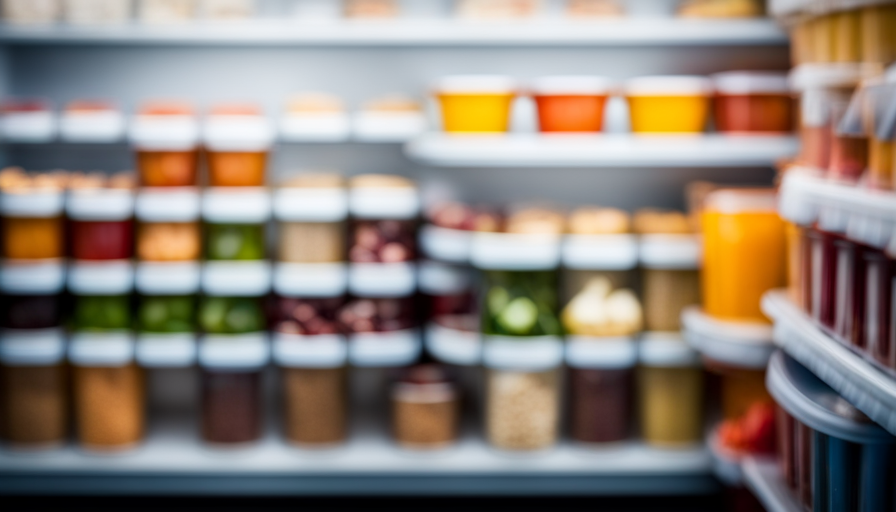
Have you ever found yourself constantly rushing to prepare meals for your beloved pets? With the busy nature of our daily lives, it can be challenging to find time to cook fresh and healthy food for our animals regularly. But what if there was a way to give your pet the benefits of a raw food diet without the daily hassle?
Enter the technique of feeding raw food ahead of time. By preparing raw meals in bulk and utilizing proper storage techniques, you can conveniently provide your pet with the nourishment they need, while also maintaining their health and well-being.
In this article, we will explore the benefits of feeding raw food ahead of time, discuss the importance of choosing the right ingredients, and provide expert guidance on how to properly store and introduce raw meals to your pet. Get ready to revolutionize your pet’s diet and simplify your feeding routine!
Key Takeaways
- Feeding raw food ahead of time provides the benefits of a raw food diet without the daily hassle of preparation.
- Lean meats, supplements, fruits, and vegetables should be included in a pet’s raw diet to ensure essential nutrients.
- Proper storage of raw food is crucial for freshness and safety, with vacuum-sealed containers being effective.
- Portioning, labeling, and bulk meal preparation can save time, minimize waste, and provide consistent nutrition for pets.
Understanding the Benefits of Preparing Raw Meals
Imagine your furry friend eagerly devouring a freshly prepared, nutrient-rich raw meal, their tail wagging with delight as they savor the benefits of a homemade diet. Feeding raw food to your pet has numerous advantages that can greatly enhance their overall health and well-being.
One of the key benefits of raw feeding is the provision of essential nutrients in their natural form. Raw meals contain high-quality proteins, healthy fats, and a wide range of vitamins and minerals that are easily absorbed by your pet’s body, promoting optimal growth and development.
Additionally, raw feeding can help address certain health issues such as allergies and digestive problems. By eliminating processed ingredients and additives commonly found in commercial pet foods, you can reduce the risk of allergic reactions and improve digestion.
Moreover, transitioning to a raw diet can provide mental stimulation for your pet, as they engage in the natural chewing and tearing motions required to consume raw food. This can help prevent boredom and behavioral issues caused by the monotony of processed diets.
Overall, feeding your pet a raw diet offers a multitude of benefits that can contribute to their longevity and vitality.
Choosing the Right Ingredients for Your Pet’s Diet
Ensure your furry friend’s diet is packed with powerful and palatable ingredients that promote their optimal health and happiness. When choosing appropriate protein sources for your pet’s raw diet, it’s important to consider their specific dietary needs. Dogs, for example, thrive on a diet that includes lean meats such as chicken, turkey, beef, and fish. These protein sources provide essential amino acids, which are the building blocks of muscle and tissue repair.
Understanding the role of supplements in a raw diet is also crucial. While raw food provides many of the necessary nutrients, some supplements can help bridge any nutritional gaps. Omega-3 fatty acids, for instance, are beneficial for maintaining healthy skin and a shiny coat. You can find these fatty acids in fish oil or flaxseed oil.
Additionally, incorporating calcium-rich ingredients like crushed eggshells or bone meal is essential for your pet’s bone health. Calcium helps support strong teeth and bones, preventing issues like osteoporosis or tooth decay.
Remember, a balanced raw diet for your pet should also include a variety of fruits and vegetables. These provide vital vitamins, minerals, and antioxidants that boost their immune system and overall well-being.
By carefully selecting the right ingredients for your pet’s raw diet and incorporating necessary supplements, you can ensure they receive the nutrition they need for optimal health and happiness.
Properly Storing Raw Food for Future Use
To keep your furry friend’s future meals fresh and safe, make sure you store the raw ingredients properly. Storing raw food without freezing can be a challenge, but there are ways to maintain its freshness.
One effective method is using vacuum-sealed containers for raw food storage. Vacuum-sealed containers are a great option for storing raw food because they remove the oxygen from the container, preventing the growth of bacteria and other harmful microorganisms. This helps to preserve the quality and nutrients of the raw ingredients. Additionally, vacuum-sealed containers are airtight, which means they also prevent any odor from escaping, keeping your kitchen smelling fresh.
When using vacuum-sealed containers, it’s important to properly portion out the raw food before sealing. This ensures that you only defrost the amount you need for each meal, minimizing waste. It’s also crucial to label the containers with the date and the type of raw food inside, as this will help you keep track of what needs to be used first.
Remember, properly storing raw food is essential for maintaining its freshness and safety. By using vacuum-sealed containers, you can ensure that your pet’s meals are always of the highest quality.
Preparing Raw Meals in Bulk
When you’re ready to dive into the world of meal prep, get your apron on and start batching those fresh, nutrient-packed meals for your furry pals. Bulk meal preparation is an excellent way to save time and ensure your pets are getting a well-balanced diet.
By planning ahead and preparing raw meals in bulk, you can streamline the feeding process and provide your pets with consistent nutrition. To begin, gather all the necessary ingredients and tools for your recipes. Make sure to have a variety of proteins, such as chicken, beef, and fish, along with fruits, vegetables, and supplements.
Next, determine the appropriate portion sizes for your pets based on their weight, age, and activity level. Once you have everything ready, start by portioning out the ingredients for each meal. Use a scale or measuring cups to ensure accuracy. Then, combine the ingredients in large batches, making sure to mix them thoroughly.
Divide the bulk meals into individual containers or freezer bags, labeling them with the date and contents. Properly storing the prepared meals is crucial to maintain freshness and prevent contamination. Keep the containers in the refrigerator for up to three days or freeze them for longer-term storage.
When it’s time to feed your pets, simply thaw the meals in the refrigerator overnight or warm them slightly before serving. By utilizing bulk meal preparation and meal planning techniques, you can take the stress out of feeding raw food to your pets. It allows you to provide them with nutritious meals while saving time and effort in the long run.
So, roll up your sleeves and get ready to embark on this exciting and beneficial journey for your furry friends.
Using Freezing Techniques to Preserve Freshness
Don’t worry about your furry friends going hungry or their meals spoiling because freezing techniques will preserve the freshness of their nutrient-packed meals for an extended period of time. Freezing is an effective method for extending the shelf life of raw pet food while maintaining its nutritional value.
By freezing the meals, you can ensure that your pets are getting the same level of nutrients as they would from fresh food.
When using freezing techniques to preserve the freshness of raw pet food, it’s important to follow a few guidelines. First, make sure to portion the meals appropriately before freezing them. This’ll make it easier to thaw and serve the meals when needed.
Secondly, use high-quality freezer-safe containers or freezer bags to prevent freezer burn and maintain the taste and texture of the food.
Lastly, label each container with the date of freezing to keep track of the freshness of each meal.
To thaw the frozen meals, simply transfer them from the freezer to the refrigerator and allow them to thaw slowly overnight. Avoid thawing the food at room temperature, as this can promote bacterial growth. Once thawed, the meals can be served to your pets, providing them with a delicious and nutritious meal.
Freezing techniques are a reliable way to preserve the freshness of raw pet food. By following the proper freezing and thawing methods, you can ensure that your pets are receiving the same high-quality meals even when served ahead of time.
Thawing and Serving Raw Meals Safely
Properly thawing and serving frozen meals is crucial to ensure the safety and quality of the nutrient-rich meals for your beloved companions. When it comes to thawing techniques, there are a few important things to keep in mind.
Firstly, it’s best to thaw raw pet food in the refrigerator. This slow thawing process allows the food to defrost evenly while minimizing the risk of bacterial growth. Simply place the frozen meal in a covered container and let it thaw for 24-48 hours.
Alternatively, if you need to thaw the food quickly, you can use the cold water method. Place the frozen meal in a sealed plastic bag and submerge it in cold tap water. Change the water every 30 minutes until the food is thawed. However, be cautious not to use warm water, as it can encourage the growth of bacteria.
Now that you’ve properly thawed the raw food, portion control is key. It’s recommended to divide the thawed meal into individual serving sizes to avoid waste and ensure proper nutrition. Use a scale or measuring cup to accurately portion the food according to your pet’s dietary needs.
By following these thawing techniques and practicing portion control, you can ensure that your pets receive safe and wholesome meals.
Monitoring Your Pet’s Health and Nutritional Needs
Monitoring your pet’s health and nutritional needs is crucial for their overall well-being, and did you know that approximately 56% of pets in the United States are overweight or obese? As a responsible pet owner, it’s important to keep a close eye on your furry friend’s weight and make necessary adjustments to their portion sizes.
Regularly monitoring your pet’s weight is essential in ensuring they maintain a healthy body condition. Keep a record of their weight on a weekly basis and consult with your veterinarian if you notice any significant changes. By tracking their weight, you can identify any potential issues early on and take appropriate action.
Adjusting portion sizes is another important aspect of monitoring your pet’s health. As they age or their activity level changes, their nutritional needs may vary. It’s crucial to adapt their meal sizes accordingly. Overfeeding can lead to weight gain and obesity, while underfeeding can result in malnutrition and other health problems. Consult with your veterinarian to determine the appropriate portion sizes for your pet based on their age, breed, activity level, and overall health.
Remember, maintaining a healthy weight is key to your pet’s longevity and well-being. By monitoring their weight and adjusting portion sizes as needed, you can ensure they lead a healthy and happy life.
Introducing Raw Food to Picky Eaters
If your finicky furball turns up their nose at traditional meals, introducing a raw food diet might be the solution. Transitioning your picky eater to raw food can be a challenge, but with patience and the right approach, you can successfully introduce this nutritious diet.
Here are three tips to help you overcome resistance and make the switch:
-
Gradual Transition: Start by mixing a small amount of raw food with your pet’s current diet. Over time, gradually increase the proportion of raw food while decreasing the old food. This slow transition allows your pet to acclimate to the new taste and texture without causing digestive upset.
-
Variety is Key: Pets, like humans, can get bored with the same food every day. Offer a variety of raw meats, including chicken, beef, and fish, to entice your pet’s taste buds. You can also add fruits and vegetables for added nutrients and flavor.
-
Patience and Persistence: Introducing raw food to a fussy eater may take time and perseverance. Don’t give up if your pet initially rejects the raw diet. Offer the food consistently, and try different preparation methods to find what your pet prefers. Eventually, they’ll likely come around and enjoy the benefits of a raw food diet.
By following these tips and being patient with your pet, you can successfully introduce raw food to even the pickiest eaters. Remember to consult with your veterinarian for guidance and to ensure your pet’s nutritional needs are being met.
Addressing Common Concerns and Myths about Raw Feeding
Now that you’ve successfully introduced raw food to your picky eater, it’s important to address common concerns and debunk any misconceptions about raw feeding.
Many pet owners worry that feeding raw food can be unsafe due to bacteria or parasites. However, it’s important to note that raw meat for pets is handled and stored differently than human-grade meat. Proper hygiene practices, such as washing hands and disinfecting surfaces, can greatly reduce the risk of contamination.
Another myth surrounding raw feeding is the belief that it’s difficult to transition from kibble to raw food. While it may take some time for your pet to adjust to the new diet, there are several strategies you can employ to ease the transition. Gradually mixing small amounts of raw food with their kibble can help them get accustomed to the new texture and taste. Additionally, adding some warm water or bone broth to the mixture can make it more appealing.
It’s important to note that every pet is different, and their transition may vary. Patience and consistency are key during this process.
By addressing these common concerns and debunking misconceptions, you can feel confident in your decision to feed raw food to your pet and provide them with a nutritious and balanced diet.
Consulting with a Veterinarian for Expert Guidance
When it comes to ensuring the best health for your furry companion, it’s crucial to consult with a veterinarian for their expert guidance and advice. Veterinarians play a key role in providing recommendations on feeding raw food to pets and can help address any concerns or myths surrounding this practice. They have the knowledge and experience to guide you in making the right choices for your pet’s nutrition.
Consulting with a veterinarian allows you to receive personalized recommendations tailored to your pet’s specific needs. They can assess your pet’s overall health, consider any underlying conditions, and determine if a raw food diet is appropriate. Additionally, they can provide guidance on the proper preparation, handling, and storage of raw food to minimize the risk of foodborne illnesses.
It’s important to note that while raw feeding can have potential benefits, there are also potential risks involved. A veterinarian can help you understand these risks and provide strategies to mitigate them. They can educate you on proper food handling practices, the importance of balanced nutrition, and the potential for nutritional deficiencies or imbalances.
By consulting with a veterinarian, you can make informed decisions about feeding raw food to your pet and ensure their overall health and well-being. Their expert guidance and recommendations are invaluable in navigating the complex world of raw feeding.
Frequently Asked Questions
How often should I feed my pet raw food?
You should feed your pet raw food on a regular basis to ensure their nutritional needs are met. The feeding frequency depends on factors such as the age, weight, and activity level of your pet.
As part of the transitioning process, start by introducing small amounts of raw food and gradually increase the portion size over time. This allows your pet’s digestive system to adjust to the new diet.
It’s important to consult with a veterinarian to determine the appropriate feeding frequency for your specific pet.
Can I mix raw food with commercial pet food?
Yes, you can mix raw food with commercial pet food, such as dry kibble. Mixing the two can provide a balanced diet for your pet, combining the benefits of both.
Raw food offers essential nutrients and enzymes that may be lacking in commercial pet food. It can also promote healthier skin, coat, and digestion. However, it’s important to consult with your veterinarian to ensure your pet receives proper nutrition and to avoid any potential health risks.
Are there any risks to feeding my pet raw food?
Feeding your pet raw food can have numerous benefits. It provides essential nutrients, promotes healthier skin and coat, and improves digestion. However, it’s crucial to handle and store raw pet food properly to minimize the risk of bacterial contamination.
Raw food should be kept frozen until ready to serve, and any leftovers should be refrigerated or discarded. Additionally, make sure to clean all utensils and surfaces thoroughly after handling raw pet food to prevent cross-contamination.
What are some common signs that my pet is not tolerating raw food well?
Recognizing signs of raw food intolerance in pets is crucial for their well-being. Look out for symptoms such as diarrhea, vomiting, excessive gas, or a lack of appetite. If your pet exhibits these signs, it may be struggling to tolerate the raw food diet.
To transition your pet to a raw food diet, start by introducing small amounts of raw food mixed with their regular diet. Gradually increase the portion of raw food over a few weeks until they’re fully transitioned.
Can I feed my pet raw food if they have health conditions or allergies?
Raw food can worsen health conditions in pets and trigger allergies. It’s important to consult with your veterinarian before feeding raw food to a pet with health conditions or allergies. Some health conditions, such as pancreatitis or compromised immune systems, may make it unsafe for pets to consume raw food. Similarly, pets with allergies may have adverse reactions to specific ingredients found in raw food. Your veterinarian can provide guidance on appropriate dietary options for your pet’s specific needs.
Is It Safe to Feed Raw Food to Pets in Advance?
Feeding a labrador raw food has both supporters and opponents. Some argue it’s a natural, healthier option, while others worry about the risk of bacterial contamination. Consult with a veterinarian to make an informed decision. Always handle and store raw food properly to minimize potential health hazards for your pet.
Conclusion
Congratulations on taking the initiative to explore the world of raw feeding for your furry companion! By understanding the benefits, choosing the right ingredients, and properly storing and preparing raw meals, you’re ensuring a nourishing diet for your pet.
Remember to monitor their health and nutritional needs, and don’t be discouraged if they’re initially hesitant. With patience and the guidance of a veterinarian, you can address any concerns or myths surrounding raw feeding.
Keep up the great work in providing the best nutrition for your beloved pet!
Lorraine, a talented writer for rachaelsrawfood.com, brings a unique blend of creativity and expertise to the platform. With her passion for writing and deep knowledge of raw food, she plays a crucial role in inspiring and educating readers about the joys and benefits of a raw food lifestyle.
Lorraine’s creativity shines through in her recipe development. She enjoys experimenting with unique flavor combinations and innovative cooking techniques, pushing the boundaries of what can be achieved with raw ingredients. Her recipes not only showcase the incredible taste and variety of raw food but also demonstrate that a raw food diet can be exciting, diverse, and satisfying.
In addition to her writing contributions, Lorraine actively seeks out new trends, research, and developments in the field of raw food. She attends workshops, conferences, and culinary events, constantly expanding her knowledge and staying up to date with the latest discoveries. This commitment to continuous learning ensures that her writing remains current, reliable, and relevant to the ever-evolving landscape of raw food.
Lorraine’s genuine enthusiasm for raw food is contagious, and she strives to connect with readers personally. She understands that embracing a raw food lifestyle can be a journey, and she uses her writing to provide guidance, support, and encouragement to individuals at all stages of their journeys. Her empathetic approach and storytelling make her a trusted and relatable voice in the raw food community.
What is Raw Food?
How To Fix Teeth Problems On A Raw Food Diet
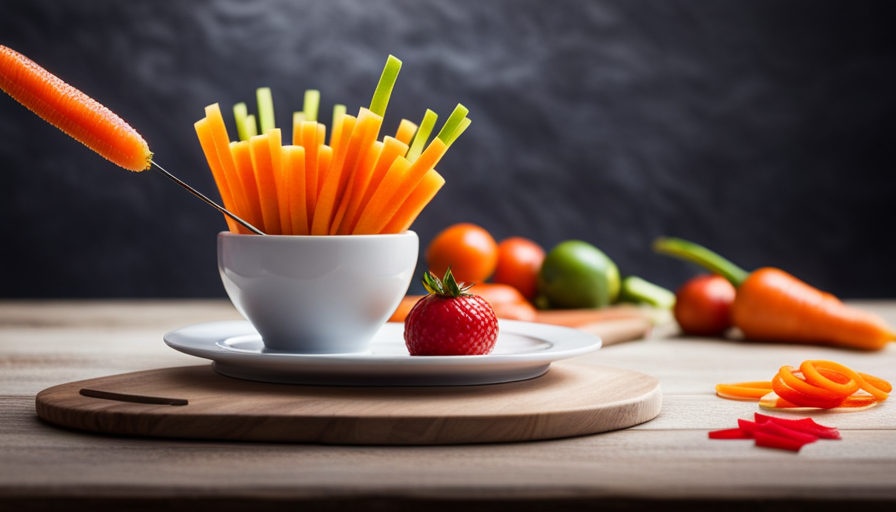
Do you ever feel like your teeth are working against you? Picture them like a leaky faucet that won’t stop, constantly causing problems and needing constant repairs.
Well, imagine your teeth as soldiers, tirelessly defending your oral health. Just like any soldier, they need proper nourishment and care to stay strong and fight off the enemy – dental problems.
If you’re on a raw food diet, you might be wondering how to fix teeth problems and support your dental health. The good news is that with the right knowledge and practices, you can maintain strong and healthy teeth while enjoying the benefits of a raw food lifestyle.
In this article, we will explore evidence-based strategies to address teeth problems on a raw food diet. From maintaining proper oral hygiene to incorporating nutrient-rich foods, avoiding acidic foods, managing sugar intake, addressing tooth sensitivity, exploring natural remedies, and using dental supplements and mouthwashes, we’ll guide you towards a balanced approach to dental health.
So, lace up your boots, soldier, and get ready to conquer those teeth problems on your raw food diet journey!
Key Takeaways
- Proper oral hygiene practices, including brushing, flossing, and regular dental check-ups, are crucial for maintaining dental health on a raw food diet.
- Avoid consuming sugary and acidic foods to prevent tooth enamel erosion and cavities.
- Incorporate calcium-rich foods like kale, broccoli, and almonds into the raw food diet to help maintain tooth enamel.
- Seek professional dental care and advice from a dentist experienced in raw food diets to prevent and address dental issues early on.
Understanding the Impact of a Raw Food Diet on Dental Health
If you’re a fan of raw food diets, you may be interested to learn about the fascinating impact they can have on your dental health. The connection between nutrition and teeth is a crucial aspect to consider when adopting a raw food diet.
Raw food diets consist of consuming unprocessed and uncooked foods, such as fruits, vegetables, nuts, and seeds. These diets are rich in essential nutrients, enzymes, and antioxidants that can promote overall health, including dental health.
One important benefit of a raw food diet is its ability to prevent dental erosion. Dental erosion occurs when the enamel, the protective outer layer of the teeth, wears away due to acids in the mouth.
Raw fruits and vegetables, such as apples and carrots, require a significant amount of chewing, which stimulates saliva production. Saliva helps neutralize acid and protect the teeth from erosion.
Additionally, a raw food diet can help prevent tooth decay. The high fiber content in raw foods acts as a natural toothbrush, stimulating the gums and removing plaque buildup. It also promotes a healthy balance of bacteria in the mouth, reducing the risk of cavities.
Understanding the impact of a raw food diet on dental health is essential for maintaining a healthy smile. The rich nutrients and natural oral hygiene benefits of raw foods can contribute to preventing dental erosion and tooth decay, ensuring optimal dental health on your raw food journey.
Maintaining Proper Oral Hygiene
To ensure optimal oral health, it’s crucial for you to diligently maintain a rigorous routine of proper oral hygiene while adhering to your chosen dietary lifestyle. The raw food diet can provide numerous health benefits, but it’s important to also take care of your teeth to avoid any potential dental problems.
Here are some oral health tips and a dental care routine that can help you maintain healthy teeth and gums:
-
Brush your teeth at least twice a day with a soft-bristled toothbrush and fluoride toothpaste. Brushing removes plaque and bacteria that can lead to tooth decay and gum disease.
-
Floss daily to clean between your teeth and remove any food particles or plaque that your toothbrush may have missed.
-
Use an antimicrobial mouthwash to help kill bacteria and freshen your breath.
-
Visit your dentist regularly for check-ups and professional cleanings. Your dentist can detect any dental issues early on and provide appropriate treatment.
-
Avoid sugary and acidic foods as they can erode tooth enamel and increase the risk of cavities.
-
Stay hydrated by drinking plenty of water. Water helps wash away food particles and bacteria and keeps your mouth moist.
By following these oral health tips and maintaining a consistent dental care routine, you can enjoy the benefits of a raw food diet while keeping your teeth and gums healthy.
Incorporating Nutrient-Rich Foods for Strong Teeth
Incorporating nutrient-rich foods into your daily routine can help strengthen your teeth, like biting into a juicy apple or enjoying a handful of crunchy almonds. Not only do these foods provide essential vitamins and minerals, but they also promote good oral health.
One way to improve your dental health on a raw food diet is by incorporating probiotic foods. Probiotics are beneficial bacteria that can help balance the oral microbiome and reduce the risk of tooth decay and gum disease. Foods like yogurt, sauerkraut, and kimchi are excellent sources of probiotics and can be easily included in your meals.
In addition to probiotics, understanding the role of vitamins and minerals is crucial for maintaining strong teeth. Calcium and vitamin D are essential for healthy teeth and can be found in foods like leafy greens, dairy products, and fortified plant-based milk. Phosphorus, another important mineral, can be obtained from foods like beans, nuts, and whole grains.
By incorporating these nutrient-rich foods into your raw food diet, you can improve your oral health and prevent common teeth problems. Remember to maintain proper oral hygiene practices such as regular brushing and flossing to maximize the benefits of a nutrient-rich diet.
Avoiding Acidic Foods that Harm Tooth Enamel
Watch out for those acidic foods that can harm your tooth enamel – they can really ruin your smile! Acidic foods can erode the protective layer of your teeth, leaving them vulnerable to decay and sensitivity.
To maintain a healthy smile on a raw food diet, it’s important to avoid or limit the consumption of acidic fruits and other acidic foods. Here are three items to keep in mind:
-
Citrus fruits: While citrus fruits like oranges and lemons are packed with vitamin C, they’re highly acidic and can wear down tooth enamel over time. Instead of eating them alone, try incorporating them into tooth-friendly raw food recipes like smoothies or salads, where their acidity can be balanced with other ingredients.
-
Vinegar-based dressings: Many raw food enthusiasts love using vinegar-based dressings on their salads. However, these dressings can be highly acidic and harmful to tooth enamel. Opt for homemade dressings using less acidic ingredients like olive oil or avocado oil.
-
Carbonated beverages: Carbonated drinks, whether they’re sweetened or not, are loaded with acid that can weaken tooth enamel. It’s best to avoid these drinks altogether and opt for water or herbal teas instead.
By being mindful of the acidic foods you consume and incorporating tooth-friendly raw food recipes into your diet, you can protect your tooth enamel and maintain a healthy smile on your raw food journey.
Managing Sugar Intake for Dental Health
Be mindful of your sugar intake as it can greatly impact your dental health. Studies show that excessive sugar consumption increases the risk of tooth decay and cavities. When you consume sugary foods and drinks, the bacteria in your mouth feed on the sugars and produce acid as a byproduct. This acid can erode your tooth enamel, leading to cavities and other dental problems.
To manage your sugar intake and prevent tooth decay, it’s important to make conscious choices about the foods and drinks you consume. Start by reading food labels and being aware of hidden sugars in processed foods, such as sodas, candies, and baked goods. Opt for natural sugars found in fruits instead of refined sugars. Additionally, limit your consumption of sugary beverages like soda and sports drinks, as they can bathe your teeth in sugar and acid.
Practicing good oral hygiene is also essential in managing sugar intake and preventing tooth decay. Brush your teeth at least twice a day with fluoride toothpaste and floss daily to remove any plaque buildup. Regular dental check-ups and cleanings can also help detect and address any dental problems early on.
By managing your sugar intake and maintaining good oral hygiene practices, you can significantly reduce your risk of tooth decay and maintain a healthy smile on your raw food diet.
Seeking Professional Dental Care and Advice
Seeking professional dental care and advice is crucial for maintaining optimal oral health while following a raw food lifestyle. Regular checkups with a dentist who understands the unique challenges of a raw food diet can help prevent and address any teeth problems that may arise. Here are some reasons why professional dental treatment is important:
-
Prevention and early detection: Regular checkups allow your dentist to identify any potential dental issues early on, such as tooth decay or gum disease. By catching these problems in their early stages, you can prevent them from worsening and causing more significant damage to your teeth.
-
Customized advice: A dentist experienced in raw food diets can provide personalized advice on maintaining dental health. They can recommend specific oral hygiene practices, such as using natural toothpaste or mouthwash, that align with your raw food lifestyle.
-
Professional cleaning: Professional dental cleanings are more thorough than regular brushing and flossing at home. They remove built-up plaque and tartar, which can be especially important for raw food enthusiasts who consume high amounts of fruits and vegetables.
-
Treatment options: If you do experience any teeth problems, a dentist can offer appropriate treatment options. This may include fillings, crowns, or other restorative procedures to repair any damage and restore your oral health.
By seeking professional dental care and advice regularly, you can enjoy the benefits of a raw food diet while maintaining a healthy and beautiful smile.
Addressing Tooth Sensitivity on a Raw Food Diet
If you’ve been following a raw food diet and experiencing tooth sensitivity, you may be wondering how to address this issue. Don’t worry, you’re not alone. Many individuals on a raw food diet have reported increased tooth sensitivity. However, there are steps you can take to alleviate this problem and maintain a healthy smile.
Firstly, it’s important to understand that tooth sensitivity can be caused by various factors, including enamel erosion and gum recession. One way to tackle this issue is by incorporating tooth whitening products into your oral care routine. Whitening toothpaste or strips can help remove surface stains and brighten your teeth.
Additionally, practicing good oral hygiene is crucial for preventing tooth decay. While a raw food diet can be beneficial for overall health, it’s important to remember that some raw foods, such as citrus fruits, can be acidic and potentially harmful to tooth enamel. Therefore, it’s essential to brush your teeth thoroughly after consuming acidic foods and drinks.
Furthermore, consider using a fluoride mouthwash to help remineralize your teeth and strengthen enamel. Fluoride has been proven to be effective in preventing tooth decay and reducing sensitivity.
By following these simple steps, you can address tooth sensitivity and maintain a healthy smile while on a raw food diet. Remember, it’s always best to consult with a dental professional for personalized advice and recommendations. Keep smiling!
Exploring Natural Remedies for Dental Issues
Discover the power of nature’s remedies to naturally address and improve your dental well-being. When it comes to maintaining good oral health on a raw food diet, there are several natural remedies that can help you address dental issues.
Here are some alternatives to traditional toothpaste and herbal remedies for gum health that you can incorporate into your daily routine:
-
Baking Soda: This common household ingredient can be used as a natural toothpaste alternative. Its mild abrasive properties help to remove plaque and stains from your teeth, leaving them clean and white.
-
Coconut Oil Pulling: This ancient Ayurvedic practice involves swishing coconut oil in your mouth for 10-15 minutes. It helps to remove harmful bacteria and promote gum health.
-
Aloe Vera Gel: Aloe vera has anti-inflammatory properties that can help soothe gum irritation and reduce inflammation. You can apply a small amount of aloe vera gel to your gums and massage it gently.
-
Tea Tree Oil: Known for its antimicrobial properties, tea tree oil can help fight off bacteria that cause gum disease. Mix a few drops of tea tree oil with water and use it as a mouthwash or apply it directly to your gums.
By incorporating these natural remedies into your daily routine, you can improve your dental well-being and maintain good oral health on a raw food diet. Give them a try and experience the benefits for yourself!
Using Dental Supplements and Mouthwashes
Embrace the power of dental supplements and mouthwashes, unleashing a wave of freshness and vitality for your oral well-being. When it comes to fixing teeth problems on a raw food diet, these natural remedies can play a significant role.
Dental supplements are designed to provide essential nutrients that support healthy teeth and gums. Look for supplements that contain calcium, vitamin D, and vitamin C, as these nutrients are known to promote dental health. By incorporating these supplements into your daily routine, you can give your teeth the extra support they need.
In addition to dental supplements, natural mouthwashes can also be beneficial for maintaining a healthy mouth. Look for mouthwashes that contain ingredients like tea tree oil, peppermint oil, and aloe vera, as these have antibacterial and anti-inflammatory properties. These natural mouthwashes can help freshen your breath, kill bacteria, and reduce inflammation in your gums.
When using dental supplements and mouthwashes, it’s important to follow the instructions provided and use them consistently. While these natural remedies can be effective, they’re not a substitute for regular dental care. It’s still important to brush and floss your teeth daily, visit your dentist regularly, and maintain a healthy diet.
By incorporating dental supplements and natural mouthwashes into your routine, you can enhance your oral well-being and address teeth problems on a raw food diet.
Embracing a Balanced Approach to Dental Health on a Raw Food Diet
Achieving optimal dental health while following a raw food lifestyle requires a balanced approach that incorporates various strategies and techniques. Here are three important considerations to help you maintain a healthy smile on a raw food diet:
-
Pay attention to your diet: While a raw food diet can offer numerous health benefits, it’s important to ensure you’re consuming a balanced array of nutrients. Make sure to include a variety of fruits, vegetables, nuts, and seeds to provide essential vitamins and minerals for strong teeth and gums. Incorporating calcium-rich foods like kale, broccoli, and almonds can help maintain tooth enamel.
-
Practice good oral hygiene: Brushing and flossing regularly is crucial, regardless of your dietary choices. Use a soft-bristle toothbrush and fluoride-free toothpaste to gently clean your teeth twice a day. Consider using a water flosser or interdental brushes to remove food particles from hard-to-reach areas. Additionally, rinsing with an alcohol-free mouthwash can help maintain fresh breath and combat bacteria.
-
Visit your dentist regularly: Regular dental check-ups are essential to detect any potential issues early on. Your dentist can assess your oral health and provide professional cleanings to remove plaque and tartar buildup. They can also offer personalized advice on maintaining dental health while following a raw food diet.
By adopting a balanced approach to dental health and incorporating these strategies, you can enjoy the benefits of a raw food diet while keeping your teeth and gums strong and healthy.
Frequently Asked Questions
Can a raw food diet completely eliminate the need for dental care from a professional dentist?
While a raw food diet can have positive effects on your overall oral health, it can’t completely eliminate the need for professional dental care. Regular visits to the dentist are still necessary to ensure your teeth and gums stay healthy. However, a raw food diet can help maintain oral health by stimulating saliva production, which plays a crucial role in neutralizing acid and fighting off harmful bacteria in the mouth.
How can I prevent tooth sensitivity while following a raw food diet?
To prevent tooth sensitivity while following a raw food diet, there are a few steps you can take. Firstly, make sure you’re getting enough calcium and vitamin D from plant-based sources like leafy greens and fortified plant milks. Secondly, practice good oral hygiene by brushing and flossing regularly to remove any food particles. Lastly, consider using a toothpaste specifically formulated for sensitive teeth.
Remember, maintaining a balanced raw food diet and dental health go hand in hand.
Are there any natural remedies for toothaches or other dental issues that can be used on a raw food diet?
Looking for natural remedies for toothaches or other dental issues on a raw food diet? You’re in luck! There are a few simple ways to prevent dental problems while enjoying your raw food lifestyle.
First, make sure to include foods rich in calcium and phosphorus, like leafy greens and nuts, to strengthen your teeth.
Additionally, oil pulling with coconut oil can help remove bacteria and reduce inflammation.
Lastly, consider using a natural toothpaste with baking soda to maintain good oral hygiene.
Can dental supplements and mouthwashes be effective in maintaining dental health on a raw food diet?
Dental supplements can be effective in maintaining dental health on a raw food diet. They provide essential nutrients like calcium and vitamin D, which are crucial for strong teeth and gums. Look for supplements specifically formulated for dental health and follow the recommended dosage.
Mouthwashes, on the other hand, can play a role in maintaining dental hygiene by reducing bacteria and freshening breath. Opt for natural, alcohol-free mouthwashes to avoid drying out your mouth.
Incorporating these supplements and mouthwashes into your routine can help support your dental health on a raw food diet.
Is it possible to strike a balance between maintaining a raw food diet and taking care of dental health?
To strike a balance between maintaining a raw food diet and taking care of dental health, you can follow a few simple tips. For example, brushing your teeth after each meal can help remove any residual food particles.
Additionally, incorporating foods like raw carrots and apples into your diet can naturally clean your teeth.
Furthermore, drinking plenty of water and avoiding acidic fruits can prevent tooth decay.
By finding the right balance, you can enjoy the benefits of a raw food diet while maintaining dental health.
Can a Raw Food Diet Cause Teeth Problems?
A raw food diet, although beneficial in many ways, can potentially lead to teeth problems. When consuming raw grilled food merge mansion, the lack of cooking removes the natural chewing process that helps clean teeth, potentially causing dental issues. It is crucial to maintain oral hygiene and seek professional help if any teeth problems arise on this diet.
Conclusion
Congratulations on completing the journey towards a healthier smile on your raw food diet! Just like a seed that sprouts into a vibrant plant, your dedication to maintaining proper oral hygiene and incorporating nutrient-rich foods has cultivated strong and resilient teeth.
By avoiding acidic foods and managing sugar intake, you’ve safeguarded your tooth enamel from harm. Addressing tooth sensitivity and exploring natural remedies have further empowered you on this dental wellness quest.
Remember, with the right dental supplements and mouthwashes, you can continue to shine with a balanced approach to dental health.
Keep smiling!
Lorraine, a talented writer for rachaelsrawfood.com, brings a unique blend of creativity and expertise to the platform. With her passion for writing and deep knowledge of raw food, she plays a crucial role in inspiring and educating readers about the joys and benefits of a raw food lifestyle.
Lorraine’s creativity shines through in her recipe development. She enjoys experimenting with unique flavor combinations and innovative cooking techniques, pushing the boundaries of what can be achieved with raw ingredients. Her recipes not only showcase the incredible taste and variety of raw food but also demonstrate that a raw food diet can be exciting, diverse, and satisfying.
In addition to her writing contributions, Lorraine actively seeks out new trends, research, and developments in the field of raw food. She attends workshops, conferences, and culinary events, constantly expanding her knowledge and staying up to date with the latest discoveries. This commitment to continuous learning ensures that her writing remains current, reliable, and relevant to the ever-evolving landscape of raw food.
Lorraine’s genuine enthusiasm for raw food is contagious, and she strives to connect with readers personally. She understands that embracing a raw food lifestyle can be a journey, and she uses her writing to provide guidance, support, and encouragement to individuals at all stages of their journeys. Her empathetic approach and storytelling make her a trusted and relatable voice in the raw food community.
-

 Raw Food Ingredients2 months ago
Raw Food Ingredients2 months agoHow To Make Hot Chocolate With Raw Cacao Powder
-

 Raw Food Ingredients2 months ago
Raw Food Ingredients2 months agoHow To Make Chocolate From Raw Cacao
-
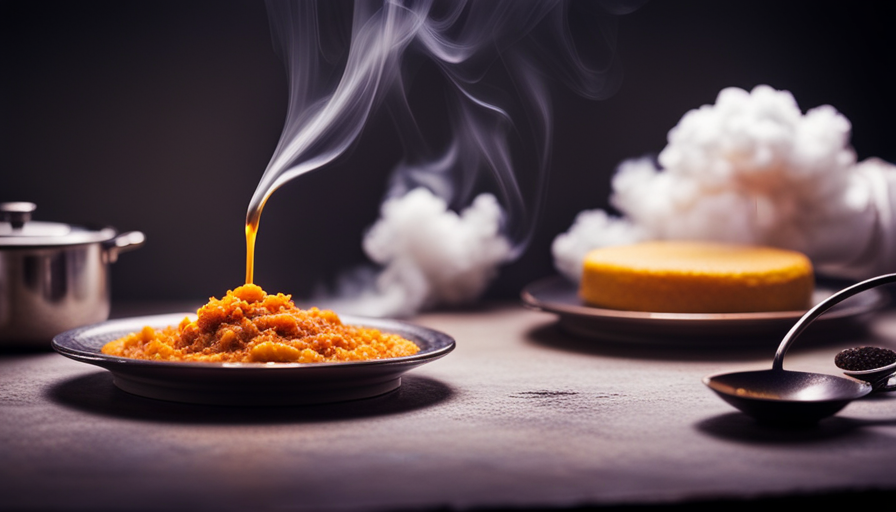
 What is Raw Food?2 weeks ago
What is Raw Food?2 weeks agoHow To Remove Raw Mustard Oil Smell From Cooked Food
-

 Raw Food Ingredients4 weeks ago
Raw Food Ingredients4 weeks agoRaw Cacao Powder How Much For 8 Oz Hot Chocolate Recipe
-

 Raw Food Ingredients4 weeks ago
Raw Food Ingredients4 weeks agoThe Truth Behind the Cacao Caffeine Myth
-
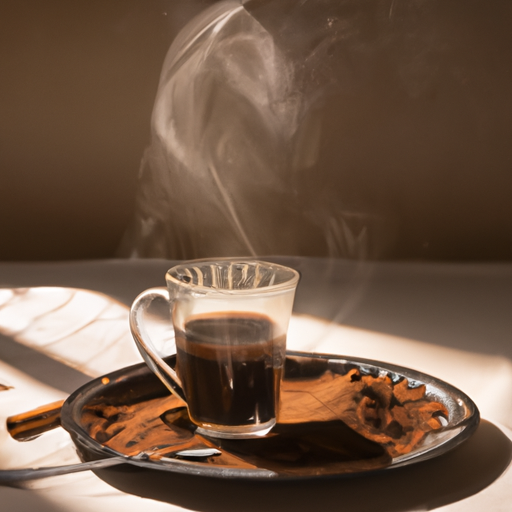
 Raw Food Ingredients2 months ago
Raw Food Ingredients2 months agoWhen Fasting Can I Drink Coffee With Raw Cacao Powder
-
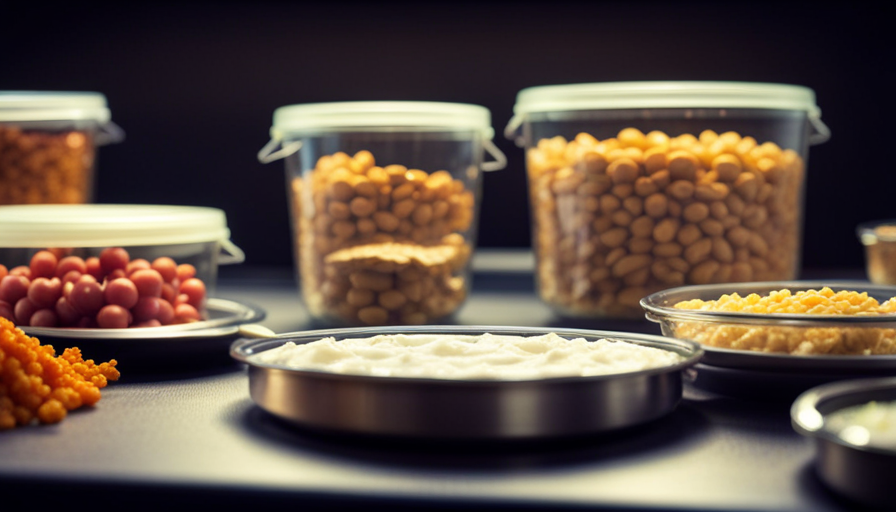
 What is Raw Food?2 weeks ago
What is Raw Food?2 weeks agoHow To Store Raw And Cooked Food Separately
-
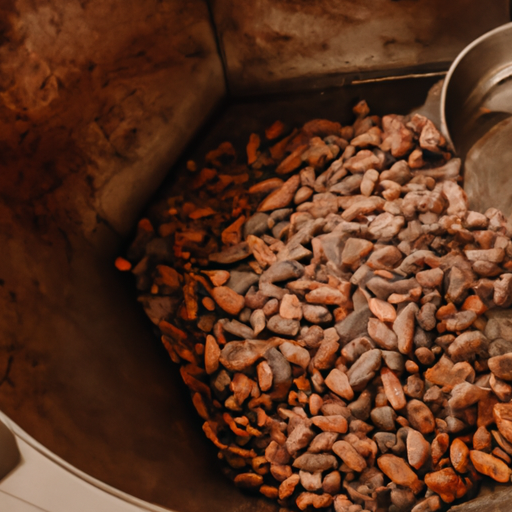
 Raw Food Ingredients2 months ago
Raw Food Ingredients2 months agoHow To Use Raw Cacao Beans
